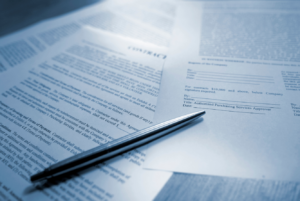03.28.2023
Best Practices for Documenting and Communicating Contract Risks
 Contract risks and issues are inevitable in any project or business relationship. They can affect the performance, quality, cost and reputation of all parties involved; therefore, a clear and effective process for identifying and resolving them is essential. Here are some best practices for managing risks and issues in contract management.
Contract risks and issues are inevitable in any project or business relationship. They can affect the performance, quality, cost and reputation of all parties involved; therefore, a clear and effective process for identifying and resolving them is essential. Here are some best practices for managing risks and issues in contract management.
Identify
The first step is recognizing potential risks and issues that may arise during the contract lifecycle. This can be achieved by performing a risk assessment, examining the contract documents (including, but not limited to, the bid proposal, prime agreement, customer terms and conditions, insurance provisions and licensing requirements), observing the contract’s performance and compliance and coming up with a plan to mitigate or work around the identified risks. Common contract risks and issues can include:
- Changes in the scope, requirements and conditions of the project or specifications.
- Delays, disruptions or failures in delivery or service.
- Disputes, claims or litigation.
- Non-compliance with laws, regulations or standards.
- Inadequate communication or collaboration.
- Misunderstandings or vagueness in the contract.
Document
The next step is documenting the contract risks clearly and consistently with the relevant parties involved. This can be achieved through contract management software, a contract review checklist or guideline, etc. The documentation should include a description of the risk and its impact, the risk’s probability and severity, the risk’s owner or responsible party, the mitigation or resolution actions and plans and the date and time of the risk occurrence and update. It is essential to document all details comprehensively and logically to ensure accuracy.
Communicate
The third step in the process is communicating the contract risks to the relevant parties involved, quickly and effectively. This can be done through various formal or informal channels such as emails, meetings, reports, memos or dashboards. It is crucial to ensure that the communication is accurate and transparent, relevant and specific to each project and parties involved, done in a respectful and productive manner and complete with solutions and action items.
Resolve
The final step in the contract process is resolving risks promptly and satisfactorily. This can be done through contract negotiations, face to face meetings, change orders, or in extreme circumstances, mediation, arbitration or litigation, depending on the severity and nature of the risk or issue. To ensure a successful and smooth contract execution, it is important to ensure that the resolution aligns with the contract objectives and expectations, is based on facts and evidence, is fair and reasonable, is documented and confirmed and is followed up and monitored.
In summary, being prepared ahead of time for risks and issues will help get you through challenges on a project just in case something goes wrong. Having open and honest conversations with all parties is critical, because trust and credibility are our most important assets when communicating risk information. At FTI, we know that by following these best practices and working closely between our risk and project teams, we can effectively and efficiently manage contract risks and issues.
If you enjoyed this blog article, please subscribe to stay up to date on the latest industry news from our experts at Faith Technologies.




